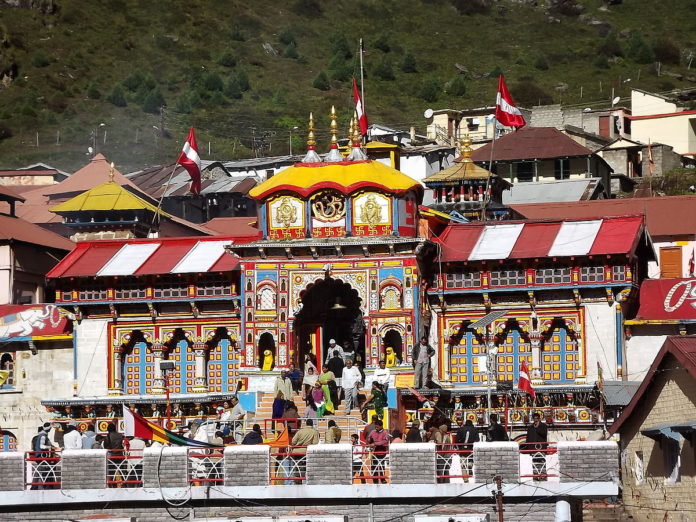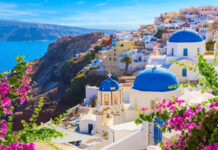Uttarakhand is the home of divine gods popularly known as Devbhumi which is the land of Gods due to the presence of numerous Hindu gods and goddesses and the holy rivers of India in the Himalayas. Hence religious tourism is more popular as a part of tourism in the state. It has the presence of tourist places which are not only visited by tourists but also the people of India and the great personalities including our honourable Prime Minister Narendra Modi, who reach there to seek the blessings of God and have some time under the holy atmosphere in between the land of the gods. The most popular and religious tourist place includes the Char Dham including Gangotri, Yamunotri, Kedarnath and Badrinath temples. Other tourist attractions include DevPrayag, RudraPrayag, VishnuPrayag, NandaPrayag, KarnaPrayag, Haridwar, Rishikesh, etc which form the divine beauty of Uttarakhand.
One architectural masterpiece from our Devbhoomi we would know about today is Badrinath temple. Badrinath is the home of Lord Vishnu, who is also called ‘Badri Vishal’, which is Badri the Big One. Legends and various sources have it that Badrinath was the abode of Lord Shiva, who used to reside there with his life partner Parvati. It is located in Chamoli District of Uttarakhand. Lord Vishnu happened to love the place and wished to reside there permanently, so he took the form of an infant and started crying unstoppable. Mother Parvati’s heart melted and she picked up the infant Vishnu and started cradling him. The crying of the infant who was Lord Vishnu, however, disturbed the meditation of Lord Shiva and unable to bear the crying of the infant. He left for higher reaches of the Himalayas and made Kedarnath his permanent residence. Once Lord Shiva left, Mother Parvati too followed him, which gave an opportunity to Lord Vishnu to take his original form and remain at Badrinath forever. This is believed to be the history of Badrinath temple and hence Lord Vishnu is worshipped in the temple. One legend also says that Lord Vishnu went into deep meditation in Padmasana in this region. Due to this, he was unaware of the extreme climatic condition and his companion Lakshmi spread above him as a Badri tree to protect him from the harsh weather. Lord Vishnu was pleased with her and named the place as Badrikashram after goddess Laxmi. Complying with this legend, one can find the deity in Padmasana posture in Badrinath temple as an idol.
The ideal time to visit Badrinath Temple is said to be from May to October. The temple is often closed from October to November, and is reopened in April as due to the snowfall it becomes inaccessible in winter months. The Badrinath Temple also known as the Badrinarayan Temple, located in Uttarakhand’s Badrinath town, is one of the four Char Dhams in the state. There are four Hindu religious destinations namely Yamunotri, Gangotri, Kedarnath, and Badrinath, collectively known as the Char Dham. These holy centres draw a large number of pilgrims each year, thus becoming the most important hubs of religious travel in the whole of Northern India. Badrinath is located at a height of around 3,100 m. It is located in the Himalayas of the Garhwal district on the banks of the Alaknanda river.
Badrinath temple follows traditional North Indian style of architecture that enhances the beauty of the place as well as the country. The temple is constructed of stone with walls and pillars bearing numerous carvings out of which some are till now unexplored. A tall arched gateway at the entrance leads to Sabha Mandap which is the hall where devotees assemble, which leads to Darshan Mandap which is the place from where Pooja to the idol is performed and finally to Garbhagriha, a holy place. The roof of the Garbha Griha extends to a conical spire that is at a height of 15 metres with a gold gilded dome at the top. A striking 1 metre high black stone idol of Badrinarayan, presides over the garbhagriha with a conch and Chakra in each arm. The other two arms rest in the lap of Vishnu who is meditating in the Padmasana posture from which we get the reference to one of the myths about it. With Lakshmi, his companion by his side, Sage Narada is also present. With Kubera on one side and Nar Naryan and Uddhava on the other side, the temple takes its complete form and makes it a divine land of gods.
The presiding deity is considered by many Hindus to be Swayambu, a self-manifested statue although devotees worship Lord Vishnu for prosperity, wealth, righteous living, protection, health, longevity and spiritual attainment. The temple also houses, Nar and Narayan the divine twins who are considered an avatar of Lord Vishnu.
It is believed that people with Dhanu, Simha and Mesha Rashi should visit this holy destination once in lifetime. The temple is one of the holy pilgrimage sites that Hindus visit to offer oblations to their ancestors and seek their blessings. Taking a holy bath at the Alaknanda River and worshipping Badrinath is believed to purify one’s soul. People also visit this temple to have some peaceful time away from the busy lives and cities under the blessings of God. Mata Murti Ka Mela is the most important festival that is held at Badrinath Temple, celebrating and worshipping the descent of the River Ganges on Earth. It is believed that the mother of Badrinath got divided the river into 12 channels for the welfare of the Earth and the place where Ganges flowed became the Holy Badrinath Temple. Badri Kedar festival is celebrated in the month of June in both the Badrinath and Kedarnath temples. As we know in winters Badrinath is closed adding to it ghee lamp known as Akhand Jyoti is lit inside the temple, to last for six months. After six months, the temple is every year reopened on Vasant Panchami during April. People visit the temple on this day in abundance to have a sight of the Akhand Jyoti.
A temple has a special place in every Indian Hindu’s life and hearts of the Hindu temples. It is an exclusive place where people go to worship, to pay their thanks to some overseeing power for his bounties and blessings. There was a time when education was imparted in temples but it was purely religious but now with the changing times people rarely visit temples and the unexplored beauty of our India. People nowadays often go to places outside India in different countries for visits and holidays but the young generation consider travelling to temples and other religious places very boring. We must change our perspectives and make visiting temples and exploring our own country’s beauty our priority and rather than the last wish of a human, the first wish. Parents rather than planning trips must tell their children about India’s unexplored beauty.
By NEHA NAURIYAL











